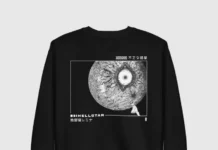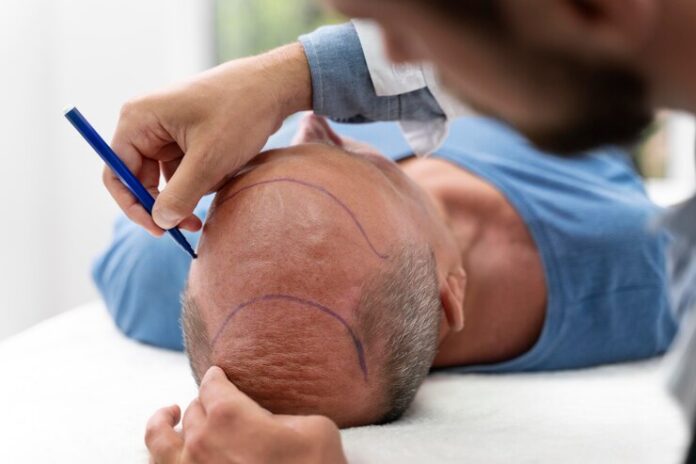Maintaining natural-looking hair can be a challenge, especially in a world where various factors like pollution, stress, diet, and lifestyle choices can significantly affect the health of your hair. Non Surgical Hair Replacement solutions are a fantastic option for those seeking a more natural look with minimal disruption to their daily life.
In cities like Dubai, many individuals seek Non-Surgical Hair Replacement in Dubai, which offers them an effective solution to hair concerns without the need for complex surgeries. These non-invasive methods aim to restore volume, texture, and density, providing a natural and aesthetically pleasing look.
Regular Scalp Care and Cleansing
Healthy hair starts with a healthy scalp, so the first step in maintaining natural-looking hair is ensuring that your scalp is clean and free from excess oil, dirt, and dead skin cells. Regular scalp care promotes better hair growth and ensures that your hair follicles remain open and healthy.
Gentle Shampooing: Use a sulfate-free, mild shampoo that suits your hair type to avoid stripping the scalp of its natural oils.Shampoo your hair 2-3 times a week to maintain a balanced scalp.
Scalp Massage: Regular scalp massages can increase blood circulation to the hair follicles, promoting hair growth. Massage your scalp gently for a few minutes each day with your fingertips, or use a scalp massager for added comfort and effectiveness. This routine helps in strengthening hair roots and improving texture.
Exfoliation: Exfoliating your scalp once a month with a gentle scrub helps to remove any product build-up and dead skin cells, which can impede hair growth.
Topical Treatments for Hair Growth
Non-surgical solutions for hair restoration often include topical treatments that work at the root of the problem. These treatments typically focus on stimulating hair follicles, improving blood circulation, and promoting overall hair health.
Minoxidil: One of the most common non-surgical treatments for hair thinning is minoxidil, a topical solution that stimulates hair growth. Minoxidil is available in both liquid and foam forms and is applied directly to the scalp. It is widely used for conditions such as male and female pattern baldness and is known to help regrow hair in areas of thinning.
Natural Oils: Many natural oils, such as castor oil, argan oil, and coconut oil, have been used for centuries to promote hair health. These oils are rich in essential fatty acids, vitamins, and antioxidants that can nourish the scalp, strengthen hair follicles, and add shine. Massaging these oils into the scalp can also promote blood circulation and reduce hair breakage.
Essential Oils: In addition to natural oils, certain essential oils like rosemary, lavender, and peppermint oil are known to support hair growth. Research suggests that these oils can help increase blood circulation to the scalp, stimulate hair follicles, and promote hair thickness. When using essential oils, always dilute them with a carrier oil to avoid skin irritation.
Low-Level Laser Therapy
Low-Level Laser Therapy (LLLT) is a popular non-surgical treatment for hair loss and thinning. LLLT uses low-level lasers to stimulate hair follicles, improve circulation, and promote hair growth. This treatment is non-invasive and has gained popularity in recent years as a safe and effective option for individuals looking to improve the density and thickness of their hair.
LLLT devices, such as laser combs, helmets, and caps, are available for home use. These devices emit light at specific wavelengths that penetrate the scalp, energizing hair follicles and increasing their ability to grow hair. Although results vary, many users report noticeable improvements in hair thickness and volume after consistent use of LLLT.
Hair Extensions and Wigs
For those who want an instant solution to thinning or hair loss, hair extensions and wigs offer a non-surgical way to achieve a natural-looking, fuller head of hair. The beauty of these options is that they can be customized to match your natural hair texture, color, and length, providing a seamless look.
Clip-In Extensions: These temporary extensions are easy to apply and remove. They come in a variety of styles, lengths, and colors, making it possible to add volume or length to your hair without any long-term commitment. Clip-in extensions can be worn for special occasions or daily wear, depending on your preference.
Tape-In Extensions: These extensions are semi-permanent and are applied using a special adhesive. Tape-in extensions lie flat against the scalp and are less noticeable than clip-ins. They are a popular choice for individuals seeking longer-lasting volume and thickness.
Wigs and Hairpieces: For more dramatic changes or complete coverage, wigs and hairpieces are an excellent non-surgical option. Modern wigs are made from both synthetic and human hair, providing realistic texture and appearance. Wigs are available in various styles, and custom fittings ensure that they match your hair color and style preferences.
Diet and Nutritional Support
Your hair is a reflection of your overall health so selecting Non-Surgical Hair Replacement to maintain a balanced, nutritious diet is key to achieving healthy hair. A well-balanced diet rich in vitamins, minerals, and proteins can help improve hair texture, reduce thinning, and prevent hair loss.
Vitamins and Minerals: Vitamins like biotin, vitamin D, and vitamin E play a crucial role in hair growth. Minerals like zinc and iron are also vital for maintaining healthy hair. You can increase your intake of these nutrients by consuming foods such as spinach, sweet potatoes, almonds, and citrus fruits. If you’re concerned about deficiencies, consider speaking to a healthcare provider about supplements.
Omega-3 Fatty Acids: Omega-3s, found in fatty fish like salmon, mackerel, and sardines, help nourish the scalp and reduce inflammation, contributing to healthy hair growth. They also help maintain the moisture balance of your hair, making it shinier and less prone to damage.
Stress Management
Stress is one of the leading causes of hair loss, and managing your stress levels can significantly impact the health of your hair. Chronic stress can lead to a condition known as telogen effluvium, which causes excessive hair shedding.
Relaxation Techniques: Incorporating stress-reduction techniques into your daily routine, such as yoga, meditation, deep breathing exercises, and mindfulness, can help keep stress levels in check. Regular physical activity, like walking or swimming, is also a great way to reduce stress and promote overall well-being.
Sleep Hygiene: A good night’s sleep is essential for hair health. Aim for 7-8 hours of sleep per night to allow your body to repair itself and promote hair growth. Poor sleep quality can contribute to hormone imbalances, which can negatively affect your hair.
Hair-Friendly Styling Practices
Excessive heat styling, chemical treatments, and rough handling can damage your hair and cause it to break. Adopting hair-friendly styling practices can help maintain your hair’s natural look and prevent unnecessary damage.
Minimize Heat Styling: Avoid excessive use of blow dryers, straighteners, and curling irons. When you do use heat styling tools, always apply a heat protectant spray or serum to reduce damage. Air-drying your hair or using a microfiber towel to blot excess moisture can prevent unnecessary heat exposure.
Gentle Brushing: Use a wide-tooth comb or a brush with soft bristles to detangle your hair. Avoid brushing your hair when it’s wet, as this can cause breakage. Instead, gently detangle with your fingers or a comb to prevent pulling and damage.
Avoid Tight Hairstyles: While it may be tempting to wear tight ponytails or braids, these styles can cause traction alopecia, a type of hair loss caused by tension on the hair follicles. Opt for loose, comfortable hairstyles that don’t put stress on your hair.
Conclusion
Whether you opt for topical solutions like minoxidil, indulge in laser therapies, or choose hair extensions, there are plenty of ways to enhance the look and health of your hair. Choose Non Surgical Hair Replacement for best results.






























